Everything you need to play cornhole—this summer's greatest socially distant game
How to toss, how to stand, and how to drink
Products are chosen independently by our editors. Purchases made through our links may earn us a commission.
It’s been called many things: corn toss, bean bag, bean toss, soft horseshoes. But the game is officially known as “cornhole”—and the popularity of this backyard sport is growing.
Although most people think of it only as a casual endeavor that must be played with a beer or Solo cup in hand, it’s also gained enough legitimacy to have not one, not two, but three official organizations competing to serve the growing U.S. market: the American Cornhole Association (ACA), the American Cornhole Organization (ACO) and the American Cornhole League (ACL). Let’s break this increasingly popular backyard game—one that seems almost made for a socially distant hangout—down to the nitty gritty.
What is cornhole?
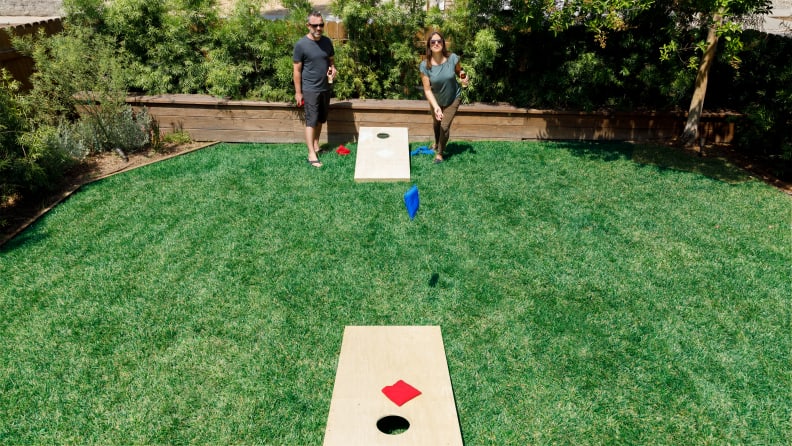
The first question most people have is, “What’s up with the name?” As it turns out, the name that makes you chuckle at the memory of vintage Beavis and Butthead really comes down to a practical description of the game. “It started out that what you had were corn feed-filled bags that you tossed into a hole in a wooden board. So what do you have? Cornhole,” says Trey Ryder, the ACL’s media director and ESPN’s Play-by-Play announcer for the game. Doesn’t get more straightforward than that.
The game is simple: In its official rules, players alternate pitching bean bags onto an angled platform with a hole drilled into the far end. The platforms face each other at a distance of 27 feet. Players pitch from a “pitcher’s box,” which is alongside the opposing board. If a bag lands on the board, the player scores one point. If the bag goes through the hole, that’s three points. The first individual or team of two to score 21 points wins.
There’s a lot of debate about where cornhole originated. Some say Germany, some say China. In the United States, both Ohio and Kentucky lay claim, but what can be agreed upon is that the game started to gain mainstream awareness about 10 or 15 years ago. That's when cornhole started popping up at trendy pubs across the northeast before becoming a regular fixture at tailgate parties and weddings.
Cornhole officially went mainstream in 2017 after earning a deal with ESPN. Since then, the ACL has turned cornhole into a viable professional sport. This July 4th, ESPN will air the ACL Pro Invitational tournament where the best in the game can double-entendre their way to a cash prize of $25,000.
What do you need to play?
The board
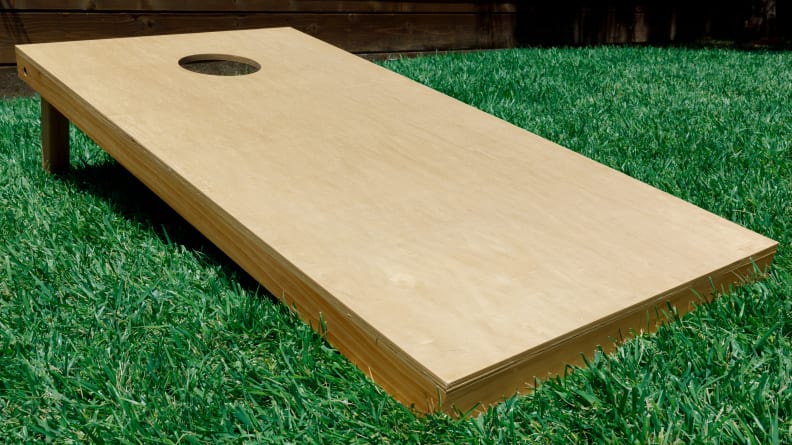
There are two types of boards out there, regulation size and "tailgate size." Regulation-size boards are 2 x 4 feet and tailgate size is 2 x 3 feet. The size of cornhole boards doesn’t affect the rules of cornhole, but strategy will change based on the surface area of the board.
"If you start with a tailgate size and then upgrade, you are really going to feel a difference in your game. The smaller boards give a taste to the entry-level player, but I tell people to figure out what you want before you buy your board," says NorthEast Conference ACL Pro, Leslie Adcock. If you want something to carry around to parties, the tailgate size is fine, but if you think you want to master cornhole and come out of this pandemic with a new ESPN-ready skill, regulation size is the way to go.
Joe Polkowski, media liaison for Cornhole Addicts, and maker of Dickie Stiffler Boards, a favorite of the pros, says you want to look for a heavy, wood board over lighter, more portable options.
"Don’t do the fabric and PVC boards. Don’t even think about it," says Polkowski. "A good set of boards is made of wood and weighs around 26 pounds each," says Polkowski. He says that a heavier board, with a stabilizing cross beam, minimizes bounce—which can result in unpredictable play—and allows the bags to slide more easily instead of ricocheting off the board’s surface.
"You also want to make sure that the surface is lacquered and as smooth as possible to minimize drag." says Adcock. "You don’t want your bags to get snagged on an uneven or poorly sanded surface."
The bags
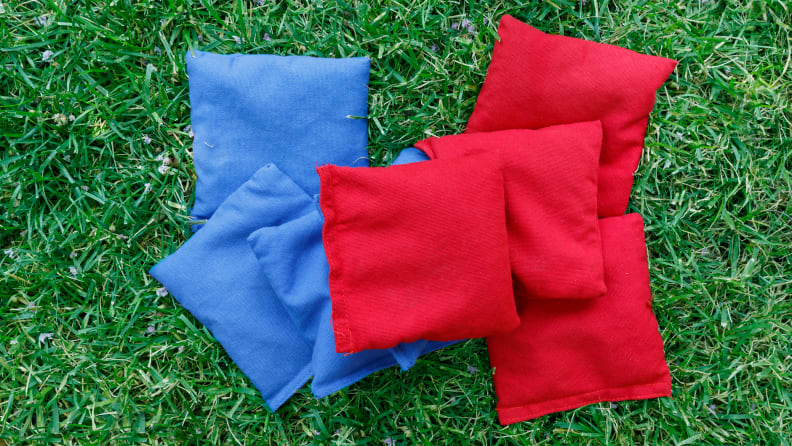
Even though the game still holds onto the name that was derived from its humble beginnings, you’ll be hard-pressed to find a professional player—or even a well-respected barstool champ—that uses corn-filled bags.
"Corn is how the game got its name but it’s a no-no," says Polkowski. "They puff up in the rain or [if they come in contact with] the sprinkler." According to the American Cornhole Association website, cornhole bags should be made from durable fabric and should be 6.25-inch squares. Each bag should weigh 14 to 16 ounces. Most board sets come with bags, but if you really want to have fun with the game, the pros say to invest in a set of resin or plastic pellet-filled bags with a double-sided surface.
"Two-sided bags are necessary for strategy," says Adcock.
The bag should also have a tacky side, for sticking to the board and blocking an opponent's shot. The other side should have a good slide to it, for sliding right into the hole, for going around blocker bags, or for sliding directly into the hole in the board.
Strategy
Cornhole's apparent simplicity betrays the level of skill, practice, and commitment it takes to truly master the game. Anyone can toss a bag and hope for the best, but the pros know that there is an enormous amount of strategy (and often a little bit of tipple) to truly master the game.
The stance
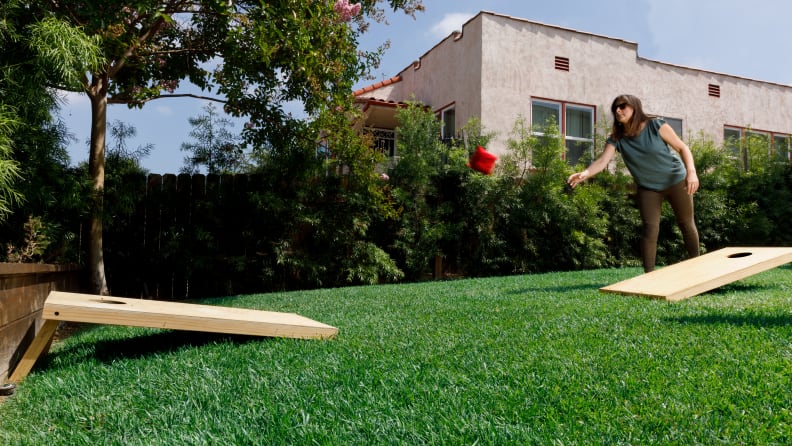
ACL Pro Jackie Sayasone from the Midwest Conference says to first and foremost figure out what stance works for you. Just like baseball or golf, your stance in cornhole is your grounding. While players can't always choose which side of the board they stand on, they can choose whether they are a “stander” or a “stepper.” The names are pretty self-explanatory: "Standers" stay in place while the toss, "steppers" take a step forward or backward.
Adcock is a stepper, while Sayasone prefers a grounding stance where she holds one leg back while she throws. Sayasone says it’s really up to the individual player to figure out what stance feels the most comfortable. However, social distancing regulations require players to step away from the pitching box for each throw for recent pro events, so you may see pros stepping more now than if you started following the sport a year ago.
The throw
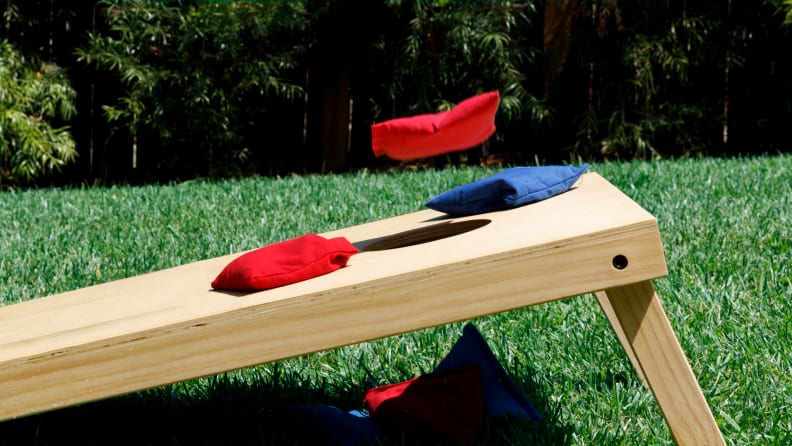
Sayasone says the best technical piece of advice she can give players is to learn to throw a flat bag (a throw that mimics that of a frisbee, according to Cornhole Addicts). Both she and Polkowski say a flat bag throw gives the best control to position a bag to land where you want it on the board. It’s also key for consistency with speed and allows you to use both sides of a bag most effectively.
“Without the flat bag, you have no control over speed or progressing to the next level,” she says.
The goal is for a bag to always land straight and with the same trajectory. "Players need to aim for a flat bag for consistency with how a bag moves through the air and how it lands. With a knuckleball you never know where it’ll end up, so work on your frisbee throw," he says. Sayasone says a good practice tool to help players learn how to spin and throw a flat bag is to take the bag and throw it straight up in the air in front of you and try to simultaneously spin it and keep it flat as it goes up, then down.
"There is some wrist action involved but it can be minimal,” she says, adding that grip is critical for spinning bags. "Watch the pros very closely! There are many different styles at release, but they all come out of the hand flat unless they are [specifically] throwing another type of shot."
Have a drink if it suits you
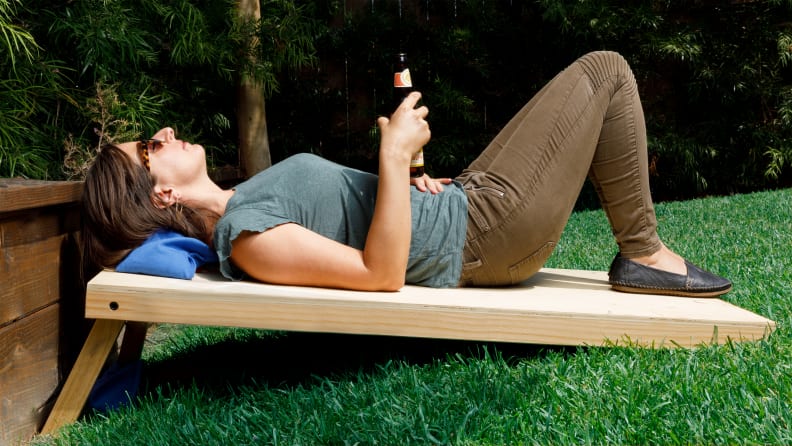
The visual of a casual cornhole player with a drink in their hand is ubiquitous for a reason. According to Ryder, even the pros are known to knock back a couple of drinks and some even know the exact amount of alcohol necessary to dunk a perfect bag toss. “You’ll see pros finishing off a beer on the court. We have players who have it down to a science and know just the right amount to drink to get them in the zone, but know when to stop before they get sloppy,” he says.
By the same token, there are also players who feel like they have the clearest head if they go into a game straight and sober. “That’s the great thing about cornhole—it takes all types and the rules really allow for all kinds of people, of every age, to compete,” says Ryder.
Practice
Sure, cornhole is known for being a casual sport, but if you want to dominate, practice is key.
Both Sayasone and Adcock say that, as with most things, practicing, watching the pros, and putting yourself up against someone who is better than you is the only way to get better. But Ryder has the advice that makes bringing yourself to a level that dominates sound the most appealing: “Just set up the boards, grab a cold one, and get out there.”
- Get the Go Sports Regulation Size Wooden Cornhole Set from Amazon for $119.99
- Get the GoSports Tailgate Size Cornhole Set from Amazon for $62.47
- Get Weather Resistant Standard Cornhole Bags from Amazon for $21.99
The product experts at Reviewed have all your shopping needs covered. Follow Reviewed on Facebook, Twitter, and Instagram for the latest deals, product reviews, and more.


